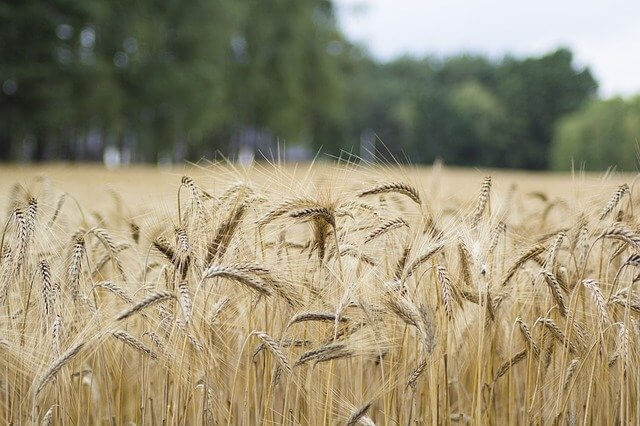You may have heard or read the term ‘sticky rice’ when you became interested in Thai food. On this page, I’d like to clarify what sticky rice is, help you understand whether it’s healthy, and give some pointers on the best Thai sticky rice brands to look out for.
What is Glutinous Rice?

Sticky rice, or glutinous rice, is a type of rice that is low in or entirely lacks a type of starch named amylose. The low amylose content in glutinous rice grains gives it a sticky, glue-like texture when cooked. This type of rice is less water-absorbent and it easily congeals so that you can break pieces of it off and dip it into sauces.
The precise historical origin of sticky rice is not known, but it’s believed to have been grown in southeast Asia for around 4,000 years. This rice type is widely used in Laos cuisine. Its grains are shorter and plumper than non-sticky alternatives.
Is Sticky Rice Healthy?
As a form of processed, refined rice, sticky rice has much of its nutrient and fiber content removed. This makes sticky rice not the healthiest option, at least in comparison to brown rice or wild rice.
The parts of the grain removed from sticky rice and all other types of white rice are the bran and germ. Don’t let this put you off eating sticky rice, though. It’s not like it’s as bad for you as eating french fries.
Rates of diabetes are quite high in Thailand due, in part, to the high intake of white rice. This includes both sticky rice and jasmine rice. Thais in the north and East of Thailand will often eat sticky rice every single day.
Unless you are a Thai food fanatic, you probably won’t be gorging on it every day. Twice per week would probably be fine; everything in moderation and all that. Although I’d be lying if i said I didn’t eat it almost every day whenever I’m in Chiang Mai.
Is Jasmine Rice Sticky Rice?
No, jasmine rice is not the same thing as sticky rice. Jasmine rice has a medium amylose content of roughly 14-22 percent. Sticky rice either completely lacks amylose or has a negligible amylose content.
Some people confuse the two because jasmine rice actually becomes slightly sticky and fluffy after cooking. But you can’t grab a hunk of jasmine rice and dip it in some sauce with the same ease as that of glutinous rice.
In my post about the history of Thai food, I described how in Isaan and northern (Lanna) areas of Thailand, it’s much more common to see dishes served with sticky rice than jasmine rice. This is due to the proximity of these areas to Laos, where sticky rice is the staple.
Where to Buy Sticky Rice
You should be able to find sticky rice in any good Asian market. It can also be frequently found on the shelves of large chain supermarkets in many countries around the world. Make sure you look for packaging that says “glutinous rice” or “sweet rice” because it will almost never be packaged as sticky rice. Online retailers such as Amazon also sell sticky rice which can be quite convenient.
Thai Sticky Rice Brands
The best Thai sticky rice brand is Sanpatong. I find it to be the most consistently good, but you can’t really go wrong with any of the big exporters. The Sanpatong rice is usually named either Three Rings or Three Ladies. Both are fine.
Another famous sticky rice brand name to look out for is Royal Umbrella. This type of rice is made by the Bangkok-based conglomerate known as CP. As a random fact you might find interesting, the CP group also runs the entire chain of 7-Eleven convenience stores in Thailand; all 11,700 of them!
How to Eat Sticky Rice
The way to eat sticky rice is to rip off small clumps of it and dip it in or eat with accompanying chili dips, sauces, grilled meats, and soups. It’s normal to squeeze the piece you’ve ripped off so that it binds better.
The beauty of the way you eat sticky rice is that it’s fun and interactive and not at all formal. It’s nice to have a method of eating that is very hands-on and doesn’t look impolite anywhere you do it; from a small Isaan street food stall to a high-end Bangkok restaurant.
Hopefully, this page has proven useful in answering your questions about sticky rice. At the very least, I hope you now are clear on what sticky rice is and what it’s place is in Thai food.
A separate post about cooking sticky rice will appear on this website in due course. You can also check out my book, Thai Food At Home, for a detailed guide on cooking sticky rice. The price is $5 and you get over 25 authentic recipes.
